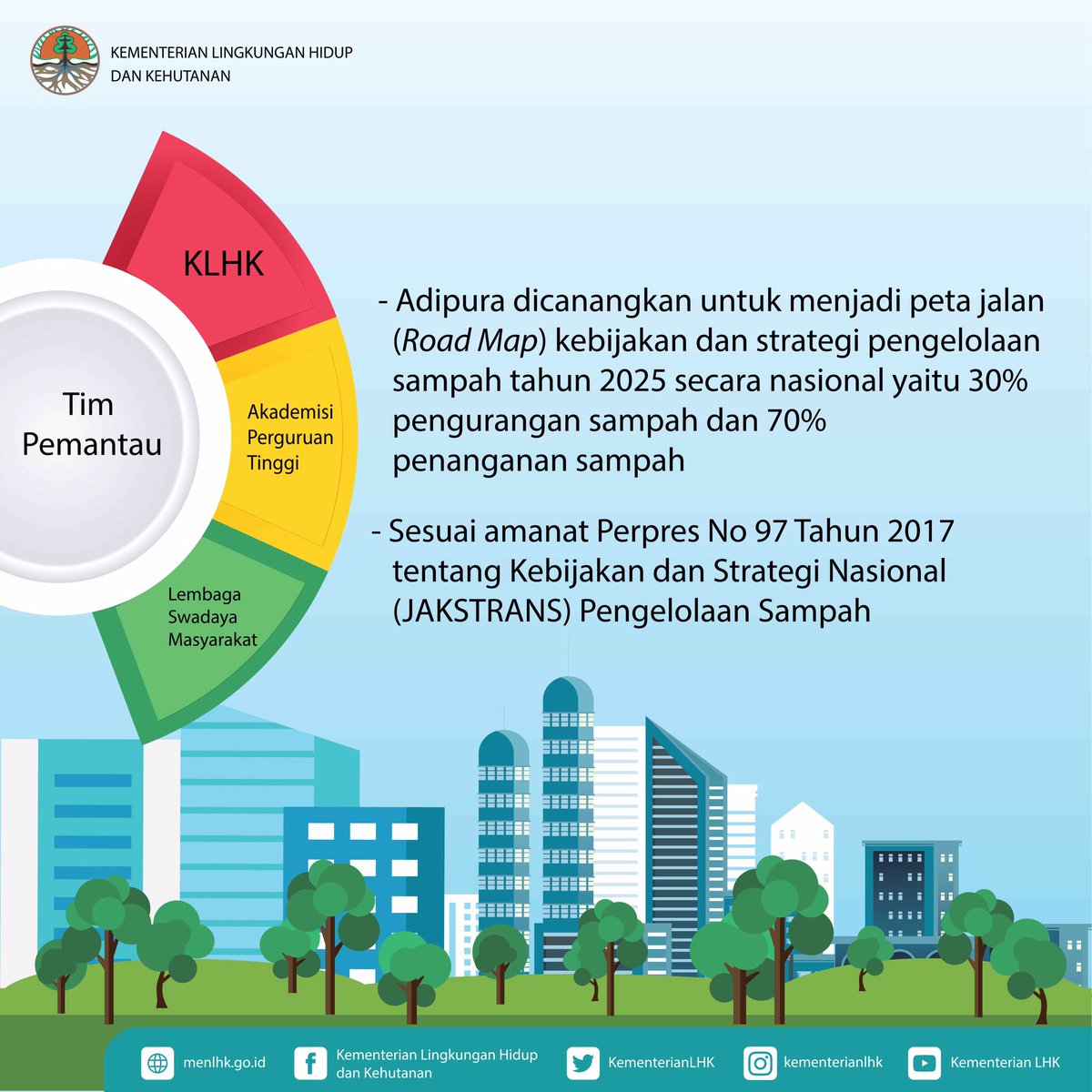Gov’t Issues Regulation on Specific Waste Management

Infographic on Adipura award. Source: Ministry of the Environment and Forestry.
President Joko “Jokowi” Widodo has issued Government Regulation Number 27 of 2020 on Specific Waste Management. (Link: https://jdih.setkab.go.id/PUUdoc/176121/PP_Nomor_27_Tahun_2020.pdf). The Regulation aims to implement provisions of Article 23 paragraph (2) of Law Number 18 of 2008 on Waste Management.
According to the Regulation, specific waste is waste which requires special management due to its nature, concentration and/or volume.
Specific waste regulated in the Government Regulation includes: a. Waste containing hazardous and toxic waste; b. Waste containing hazardous and toxic liquid waste; c. Waste from disasters; d. Building demolition debris; e. Waste that cannot be technologically processed; and/or f. Non-periodic waste.
“Specific waste not stipulated by the provisions referred to in paragraph (1) shall be regulated by a Ministerial Regulation,” Article 2 paragraph (2) of the Regulation reads.
The Central Government, provincial governments, and regencies/municipalities, based on the Regulation, should conduct specific waste management in accordance with their authority.
“The specific waste management is conducted through: a. reduction; and/or b. handling,” article 4 of the Regulation reads.
Reduction as referred to in Article 4 paragraph (1) letter a covers: a. restrictions on specific waste; b. recycling of specific waste; and/or c. reuse of specific waste. The handling referred to in Article 4 paragraph (1) letter b includes the following activities: a. sorting; b. collecting; c. transporting; d. processing; and/or e. final waste processing.
“Waste management containing hazardous and toxic waste is carried out in the following stages: a. sorting; b. collecting; c. transporting; d. processing; and e. final processing,” Article 14 of the Regulation states.
Hazardous and toxic waste, as referred to in Article 2 paragraph (1) letter b of the Regulation, originates from: a. household; b. commercial area; c. industrial area; d. special area; e. residential area; f. social facilities; g. public facilities; and h. other facilities other than health service facilities.
According to the Regulation, stakeholders of residential areas, commercial areas, industrial areas, special areas, public facilities, social facilities and other facilities are required to handle the building demolition debris, including: a. demolition of buildings; b. demolition of park infrastructure and recreation areas; c. demolition of transportation infrastructure; and/or d. demolition of irrigation infrastructure.
“The central Government, provincial governments and regencies/municipalities are responsible for handling waste that cannot be technologically processed,” Article 40 of the Regulation reads.
The Regulation stipulates that the Central Government, provincial governments and regencies/municipalities, stakeholders of the area or facilities, and everyone are required to manage non-periodic waste.
“Non-periodic waste includes: a. Waste from mass activities; b. Large trash; and c. Waste from coastal area, sea and inland waters,” Article 42 paragraph (2) of the Regulation reads.
Management of non-periodic waste, as referred to in Article 42 paragraph (1), is carried out through: a. reduction; and b. handling.
According to the Regulation, large scale waste management must be carried out by: a. Everyone at the waste source; and b. stakeholders of residential areas, commercial areas, industrial zones, special areas, public facilities, social facilities and other facilities.
“The Central Government, provincial governments and regencies/municipalities should manage waste from coastal area, sea and inland waters. Management of waste from coastal area, sea, and inland waters is carried out through waste management,” Article 57 paragraphs (1) and (2) read.
Collecting waste from coastal area, sea, and inland waters, as referred to in the Regulation, is carried out at locations determined by Central Government, provincial governments and regencies/municipalities in accordance with their authority.
According to the Regulation, the Government Minister should support specific waste management implemented by provincial areas. The support is conducted through: a. granting norms, standards, procedures and criteria for specific waste management; b. dissemination of Laws and Regulations on specific waste management; c. education and training on specific waste management; d. facilitation of dispute resolution between regions; e. facilitation of cooperation between regency/municipality governments, business entities and communities in the administration of facilities and infrastructure for specific waste management; and/or f. facilitation of technical assistance in organizing the development of facilities and infrastructure for specific waste management.
The Minister, according to the Regulation should supervise: a. provincial governments’ performance in implementing specific waste management; and b. specific waste management policies issued by provincial governments.
Article 66 of the Regulation stipulates that the financing of the implementation of the Government Regulation comes from: a. State Budget; b. Regional Budget; and/or c. other legal and non-binding sources in accordance with prevailing Laws and Regulations.
“The Government Regulation shall come into force as of the date of its promulgation,” Article 67 of the Regulation reads. The Regulation was promulgated by Minister of Law and Human Rights Yasonna H. Laoly on 9 June 2020. (EN)
Translated by: Ridwan Ibadurrohman
Reviewed by: Mia Medyana








